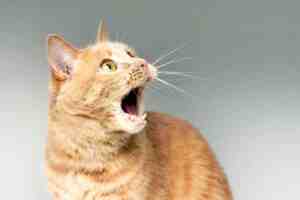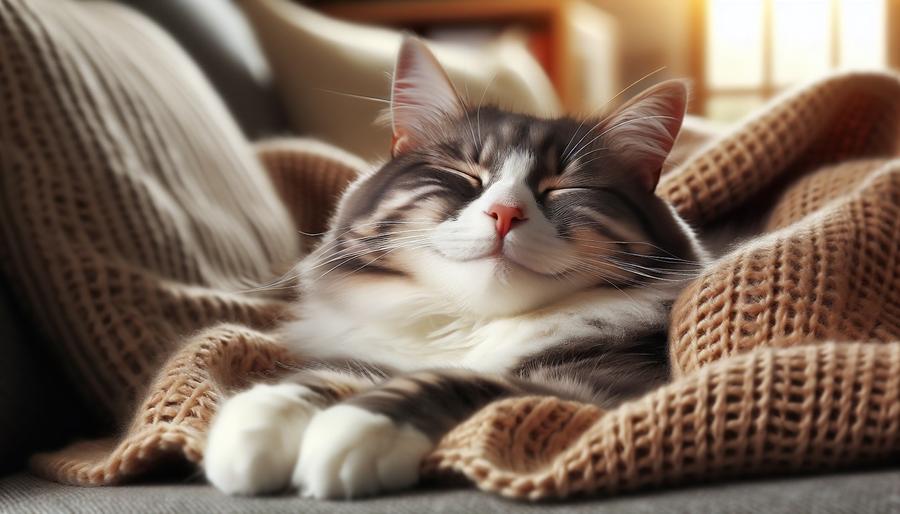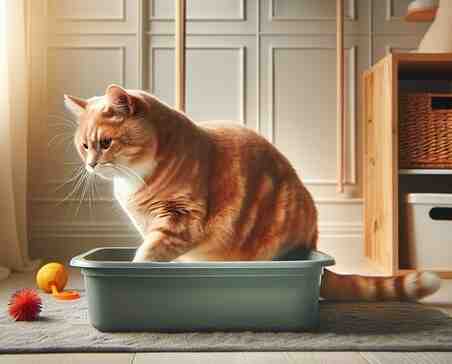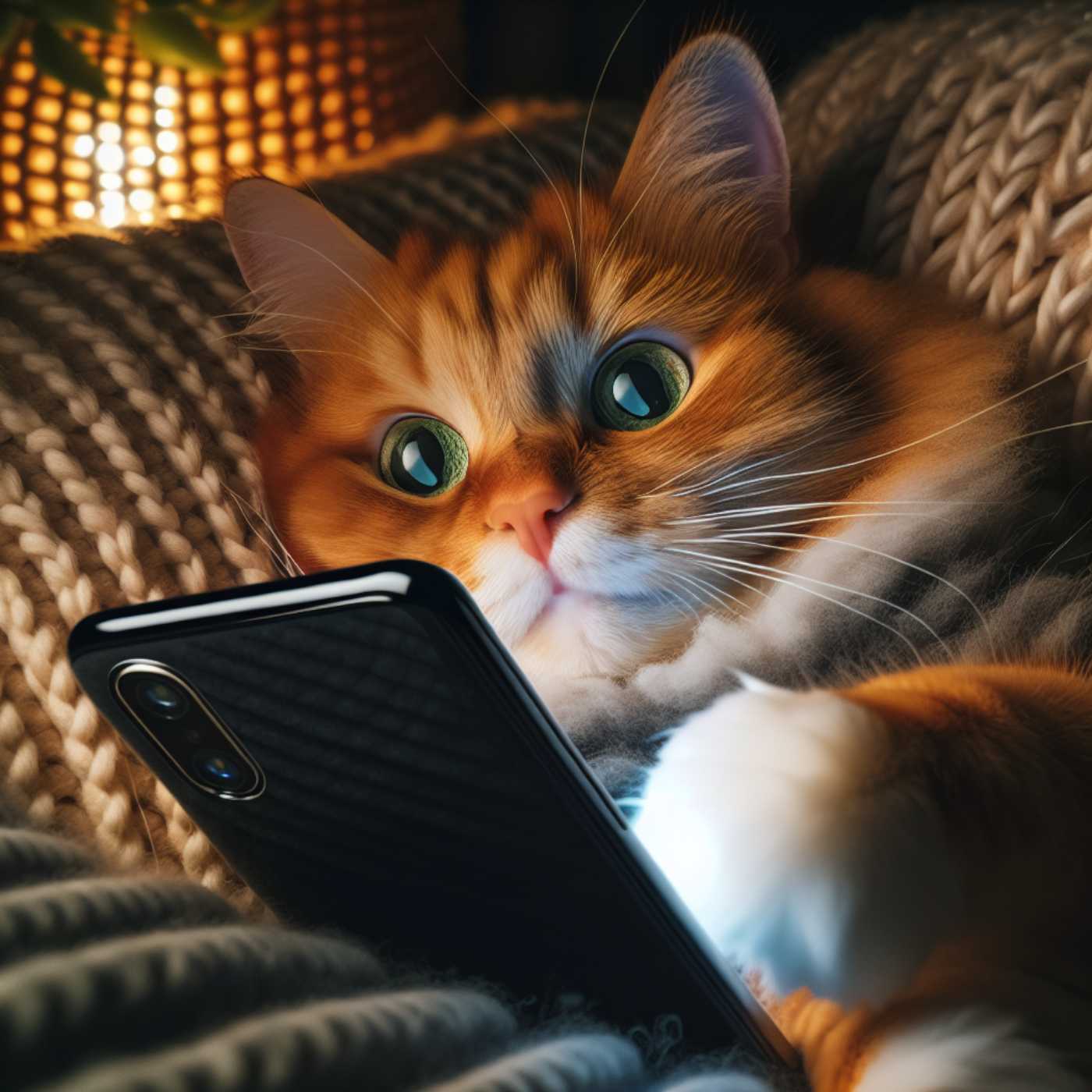Cats Purring 101 delves into the fascinating world of a cat's purr, unraveling the intricate biological and psychological mechanisms behind this mesmerizing behavior. From the vibrations of vocal cords to the release of endorphins, this book uncovers the secrets behind why cats purr and how it affects their overall well-being. A must-read for cat lovers!

Cat Behavior Demystified – Excessive Meowing
Hear Me Roar: Decoding Your Cat’s Excessive Meowing
Does it seem like your cat is auditioning for American Idol, or trying to out-meow the neighborhood dogs? If your feline friend is more vocal than your Aunt at Thanksgiving dinner, read on to discover the reasons behind excessive meowing and how to deal with it.

Is your cat channeling its inner Celine Dion at all hours of the day and night? Do you find yourself wondering if your furry friend is trying to shatter glass with their high notes or communicate with outer space?
You, my friend, are not alone. Excessive meowing is a common issue among our feline companions, and while it might be slightly amusing (or highly annoying), it’s a behavior worth understanding.
First, let’s begin by understanding that cats don’t meow for the sheer joy of hearing their adorable voices. Unlike humans, who often can’t stop babbling about the latest reality TV drama, cats use meowing as a form of communication with us, their beloved humans. It’s their way of saying, “Hey, human! I need something!” So when your cat is belting out arias at two in the morning, they’re not just practicing for “The Purr Factor.”

Reasons Why Cats Meow or Vocalize
Here’s a simple checklist to help you decode your cat’s meowing concert:
- Hunger: Just like a teenager, cats can be constantly hungry. If your feline friend turns into Mariah Carey around dinnertime, they might be trying to tell you they’re ready for their next meal.
- Attention: Cats can be divas, craving attention and demanding your adoration. If your cat is meowing excessively, they might be saying, “Look at me, love me, adore me!”
- Health: Sometimes, excessive meowing can be a sign of health issues. If your cat’s meowing has suddenly increased or changed, it might be time for a vet visit.
How to Manage Excessive Meowing
So, how do you handle a cat that won’t stop meowing? Here are a few tactics:
Routine:

Cats love a good routine. Try to feed, play, and sleep at the same times each day to give your cat a sense of stability.
Cats are creatures of habit and they tend to appreciate a consistent daily routine. This can be attributed to their wild ancestry where roexcessutines played a crucial role in survival. So, when you own a cat, it is important that you establish a good routine that your feline friend can rely on.
One of the key parts of a cat’s routine is feeding time. It is advisable to feed your cat at the same times each day. This could be once in the morning and once in the evening, or more frequently depending on the specific dietary needs of your cat. Consistent feeding times not only ensure that your cat gets the nutrition it needs, but it also helps in reducing anxiety as they know when their next meal is coming.
Playtime is another important part of a cat’s routine. Cats, especially indoor ones, need regular exercise to keep them from becoming overweight and to keep their minds stimulated. Try to schedule playtimes at regular intervals throughout the day, ideally at times when your cat is most active. This could be early in the morning or late in the evening. Regular playtimes can also help in reducing behavioral issues by channeling your cat’s energy in a positive way.
Lastly, cats need a consistent sleep schedule. Cats are crepuscular creatures, which means they are most active during dawn and dusk. However, they also need plenty of rest throughout the day. Try to ensure that your cat has a quiet, comfortable place to sleep and that their sleep is not frequently disturbed. A consistent sleep routine can help your cat feel safe and secure in their environment.
Maintaining a regular routine of feeding, playing, and sleeping can provide your cat with a sense of stability. It can reduce stress and anxiety, prevent behavioral issues, and contribute to the overall health and well-being of your cat. So, as a cat owner, it is important that you establish and stick to a consistent daily routine.
Playtime:

If your cat is an attention seeker, schedule regular playtimes throughout the day to keep them entertained.
Cats, especially those who are attention seekers, need regular stimulation to keep them happy and healthy. If your cat constantly seeks your attention, it might be a sign that they are bored or lacking in physical activity. To address this, you should schedule regular playtimes throughout the day.
These playtimes don’t have to be long; even just 15 to 20 minutes of active play can be enough. You can throw a toy mouse for your cat to chase, use a laser pointer, or even just play a simple game of ‘catch the string’. The key is to engage your cat in something that stimulates their hunting instincts and provides them with physical exercise.
Make sure to spread these playtimes evenly throughout the day. For instance, you can play with your cat in the morning before you leave for work, once in the afternoon if you are home, and once again in the evening. This will not only keep your cat entertained but also give them something to look forward to.
Scheduling regular playtimes can also help manage your cat’s attention-seeking behavior. If they know that they can expect playtimes at certain points in the day, they may be less likely to pester you for attention at other times. However, remember that every cat is different, and what works for one may not work for another.
Always remember to reward your cat after playtime. This can be in the form of treats, praises, or just simple petting. This will help reinforce the idea that playtime is a positive experience and make them more likely to engage in it willingly.
By scheduling regular playtimes throughout the day, you are not only keeping your cat entertained, but also contributing to their overall well-being. So, make sure to include this routine in your cat’s daily schedule.
Vet visit:

If your cat’s meowing persists despite all efforts, it’s time to consult with the vet. It might be a sign of a health issue that needs to be addressed.
If your cat continues to meow incessantly despite all your attempts to comfort, feed, or cater to its needs, it is advisable to seek professional help. This constant meowing could be your cat’s way of communicating discomfort or pain, hence the need to schedule a visit to the veterinary clinic.
Cats, like any other pets, do not have the ability to express their feelings verbally. However, their behaviors, such as continuous meowing, may indicate that something is not right. It’s not normal for a cat to meow persistently without a noticeable reason. While sometimes the reason might be as simple as seeking attention or expressing hunger, other times, it could be a symptom of an underlying health issue.
The health issue could range from something minor such as a hairball or something more serious like urinary tract infections, kidney disease, or even cancer. Therefore, it is crucial not to dismiss persistent meowing as just a behavioral issue or a quirk of your cat’s personality.
A visit to the vet will typically involve a comprehensive physical exam. The vet may also ask questions about your cat’s behavior, diet, and environment to gain a full picture of its health. Depending on the findings, the vet might further recommend blood tests, X-rays, or ultrasound scans to diagnose any potential diseases or conditions.
Remember that early detection of health issues often leads to more successful outcomes as the treatment can be started promptly. So if you notice your cat’s persistent meowing, don’t delay in seeking veterinary advice. It’s better to be safe and ensure that your cat is healthy and comfortable.
In conclusion, while it may be a little inconvenient or concerning when your cat’s meowing persists despite all your efforts, it’s vital to pay attention to this potential warning sign. By consulting with a vet, you are ensuring that any possible health issues are addressed promptly, thereby maintaining your cat’s overall well-being.
Remember, excessive meowing is your cat’s way of communicating with you. So, instead of investing in earplugs, try to understand what your feline friend is trying to say. Who knows, you might just discover that you’re living with the next big thing in the Cat Music industry!




This Post Has 0 Comments